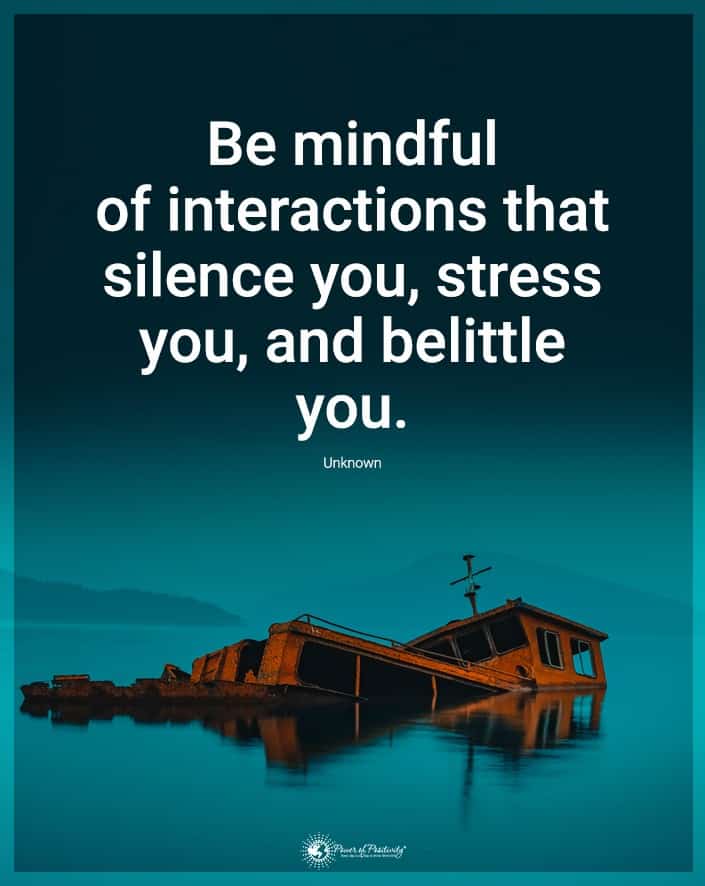Emotional abuse, also known as psychological abuse, is a painful experience that many people misunderstand. Unfortunately, it’s not uncommon for people to ignore it or consider it non-serious. They may view physical forms of abuse as the only good kinds. But this is not true at all, and this mindset only further harms victims. Worse yet, identifying emotional abuse can be exceptionally difficult when you are the victim!
Emotional abuse is severe and may cause chronic depression, anxiety disorders, suicidal ideation, and even PTSD. A lot of the danger in this abuse comes in how easily it can slip under the radar. Despite how hard it is to spot, it leaves long-lasting inner scars and wounds that can take decades to heal. These wounds can completely devastate one’s confidence and sense of self.
The ability to recognize emotional abuse can prevent the worst of its effects. It can encourage you to get out quickly at the sign of a red flag. Even if you can’t get out right away, there are benefits to identifying emotional abuse for what it is. Knowing that you’re a victim can help you survive the gaslighting and bullying from your abuser.
So, what is emotional abuse, and how can you prevent it from damaging your self-esteem?
1. Identifying Emotional Abuse Starts By Defining It
Abuse can be a complex topic, so no one’s true definition can easily be determined. Mainly, emotional abuse manifests by subjecting an individual to psychologically harmful treatment and behavior. It can occur in any familial, platonic, romantic, or even professional relationship.
Emotional abuse can blindside those who believe their relationship is healthy. The American Office of Women’s Health further states that abusive relationships can start behaving in loving and positive ways. The abuser then slowly uses different tactics to perform their abuse with steadily increasing severity.
Most often, the perpetrator of emotional abuse is in a position of power over the victim. This power can be anything from titled authority to physical strength and from financial control to threats. Acts of emotional abuse can be quite varied and may involve any of the following:
· Invalidation
An emotional abuser might constantly invalidate their victim to demean them and break their self-esteem. They might refuse to accept your emotions, dismiss your thoughts, and call you terms like “crazy” or “sensitive.” They could also gaslight you by making you believe that what you experienced isn’t real. This distortion of your reality can be highly damaging.
· Control
Emotional abusers often seek to control their victims to dictate how they behave. They may isolate you, so you can only receive input from them. They might demand that you ask them permission to perform standard daily tasks or spend time with others. They could also start to monitor your correspondences, snooping on your private conversations. This is according to the United States’ National Domestic Violence Hotline.
· Superiority
Emotional abuser often tries to portray themselves as superior and their victim as inferior. They might make jokes that poke fun at you hurtfully, act condescendingly, or behave as if they’re always right. They might ignore your ideas and scoff at them or constantly doubt you.
· Chaos
Chaos creates confusing situations, and emotional abusers love doing that to their victims. They might start random arguments, showcase overly dramatic mood swings, or behave highly unpredictably. You’ll feel like you have to tiptoe around them.
· Blackmail
Emotional blackmail is common among emotional abusers. You might be guilt-tripped into feeling bad for them. They might use your fears and concerns against you or humiliate you in silence in public. They could also deliver punishments for behavior they don’t like, such as giving you the silent treatment.
2. The Cycle Of Abuse
There’s a misconception that abuse is constant and continuous, with no break at any point. This notion is rarely ever the case. Most abusive situations and relationships involve a dangerous cycle of abuse. This cycle can give victims hope that things may improve, even when they never have and aren’t going to.
The cycle of abuse has four stages. The way these stages play out is sinister and confusing, contributing to how complex abuse is. This cycle is often why victims may think that what they’re experiencing isn’t abuse. As a result, research shows that many victims of emotional abuse don’t consider their experiences and mistreatment abusive!
Here are the stages of the cycle mentioned above of abuse:
· Step One: Tension
An abuser who’s feeling perfectly happy isn’t going to have much of a reason to lash out. That’s why it’s during times of stress that the cycle begins. An abuser might experience stress because of personal problems, fatigue, work issues, illness, or adverse circumstances. Then, as they cannot positively manage that stress, the tension only builds up. The pressure often manifests visibly, increasing irritability, paranoia, or aggression. Meanwhile, the victim starts to feel on edge, becoming guarded as they try to cater to the perpetrator’s increasingly unreasonable needs.
· Step 2: Incident
The bottled and building tension eventually explodes from the abuser. This explosion comes in the form of abuse towards the victim. They may become physically aggressive, emotionally manipulative, psychologically demeaning, or perform any other form of mistreatment. Victims may worry that relationship issues are occurring and may even feel at fault for their imagined part. Regardless, the incident is one of abuse.
· Step 3: Reconciliatory Honeymoon
Once the incident has died down, the abuser will try to push past the abuse. They may buy gifts, show the victim compliments and affection, and be extremely sweet and gentle. The rush of upbeat, feel-good hormones released as a result can make the victim feel much better. They will feel encouraged to stay and will become hopeful that things will improve.
· Step 4: (Temporary) Peace
After the reconciliation, the abuser will likely try to apologize to maintain the peace – but not in a genuinely positive way. They won’t take full responsibility for their actions. They’ll shift blame, make excuses, and minimize their actions. Worse still, they’ll do all of that while sounding like they’re providing a truthful apology! This can even be so severe that the victim feels like they were at fault or starts to think the abuse didn’t happen. The peace will be kept for a while… until the tension builds again, and it all returns to step one.
If you recognize these steps and feel you’ve been caught in a cycle of emotional abuse, it’s time to get out. Don’t fall for the tricks of step three and step four. Remember what happened in steps 1 and 2 and that it’ll happen again. This awareness can help mentally protect you – and give you the courage to leave.
3. After Identifying Emotional Abuse, How Can You Prevent It From Damaging Your Self-Esteem?
Awareness is one of the key ways to save your self-esteem from damage due to emotional abuse. Knowing what you’re experiencing makes you less likely to believe the horrible things your abuser says. While positive thinking might be slim, the hope of being able to leave the abuser can be enough to push you through.
But even with awareness, the pain from emotional abuse can still take a toll. Your self-esteem has to take repeated beatings from an abuser, and even with resilience, it’s a lot to handle. Here are some further tips for protecting your self-esteem:
· Don’t Engage
When an abuser is in the heat of the worst of their abuse, it can be tough not to react. But that reaction is what they want from you, as it allows them to shift the blame to you. Find ways to avoid engaging with an abuser’s words. Don’t give them the satisfaction of expressing your pain or hurt. Don’t let them push your buttons. Learning to disengage from an abuser can reduce some of their power over you. If necessary, distract yourself by thinking of other things so you don’t feel compelled to reply.
· Don’t Take The Blame
You’re not at fault for the abuse you’re subjected to. Emotional abusers will continually attempt to make you out to be responsible. Even if you have to pretend to accept blame for your safety, make sure that you know, deep down, it’s not your fault.
· Don’t Lose Awareness
The nature of abuse is such that it’s so easy to start excusing it or forgetting how bad it is. That’s why it’s such a dangerous cycle. Even if things genuinely do begin to change, remember that you must still be on your guard. Promises can be broken, therapy for an abuser can be ineffective, and changes can be reversed. Don’t lose sight of what an abuser did and does to you, no matter what.
· Make Plans To Get Out
Making plans to get out of an abusive environment gives you motivation. It shows you something to look forward to so your self-esteem survives. Better yet, it’s practical, allowing you to ready a plan and orchestrate it as soon as you can. It can put some of the power back in your hands to know that you’ll escape this one day.
· Keep The Hope
Losing hope is a dangerous situation for abuse victims. It can put you in worse positions and deplete all of your self-esteem. It’s important to remember that there is always hope no matter how bad your current situation is. The trauma you’ve developed may take a lot of time to heal, but what’s crucial to remember is that it will heal. Focus on getting out and protecting yourself, and once you can, you can seek professional help. It can be challenging to open up to even a mental health professional, but doing so will aid your recovery. Take things one step at a time, and you’ll be okay.
 Final Thoughts On Identifying Emotional Abuse From Damaging Your Self-Esteem
Final Thoughts On Identifying Emotional Abuse From Damaging Your Self-Esteem
Emotional abuse is not something to be taken lightly. It can affect the victim’s self-esteem, confidence, and mental health. It can deplete positive thinking and result in severe mental disorders.
Remember that you aren’t alone if you think you may be the victim of emotional abuse. If you live with your abuser, try contacting a helpline for domestic abuse. If you have more freedom, you can visit a relevant shelter or organization in your area that can help you get out. And, of course, if you can get out, you should do so as soon as possible.
Most importantly, remember that your emotions and experiences are valid. Now that you know how to start identifying emotional abuse, you know the truth. What you went through and are going through is real, serious, and painful. Your abuser’s actions are not your fault; you deserve to be in a safe, positive environment where you’re treated well.




















